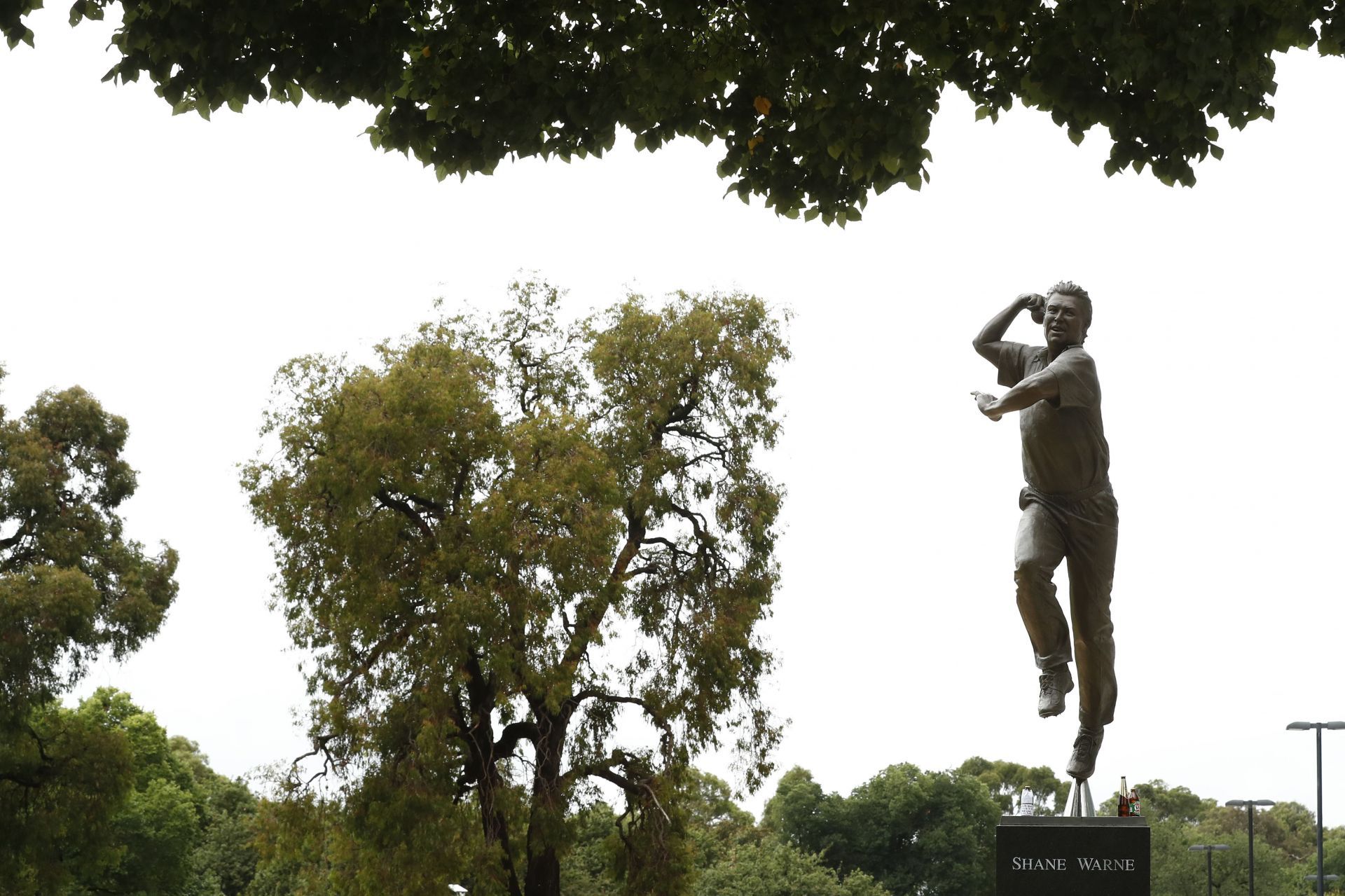
Shane Warne - The Renaissance Man of spin bowling

Shane Warne, the uncrowned king of spin in the cricket world, died at the age of 52, leaving his fans grieving and cricket lovers mourning. With the death of the legendary leg spinner, cricket lost one of its brightest stars.
As the cricketing fraternity reconciles to the fact of Shane Warne not being among us anymore, let us look back at the colorful life led by the Australian icon.

Shane Warne's early childhood and introduction to sports
Shane Keith Warne was born to Bridgette and Keith Warne at Upper Ferntree Gully in Victoria, an outer suburb of Melbourne, on 13 September 1969. He showed a keen interest in sports and games very early in childhood and was offered a sports scholarship to attend Mentone Grammar.
He liked playing both cricket and football. Warne earned his first representative honors in the 1983/84 season when he was elected to represent the University of Melbourne Cricket Club.
Warnie's next destination was St Kilda Cricket club. He joined the club in 1985. Here, he played both cricket and football earnestly and was selected in both the club's football and cricket teams.
But in 1988, he decided to concentrate only on cricket. His decision proved to be fruitful and he was selected to practice at the Australian Cricket Academy in 1990. Warne continued to improve his game and won his first game in first-class cricket for Victoria against Western Australia in1991.
Shane Warne's debut in first-class cricket was not a memorable affair and took a solitary wicket after giving away 102 runs. But he showed a glimpse of his skills on the Zimbabwe tour when he traveled there as part of the Australian B team and took seven wickets for forty-nine runs.
On return to Australia, he continued his run of good form and took seven wickets for the Australia A team against West Indies. Good back-to-back performances rewarded Warne with a call-up to the national team to replace off-color Peter Taylor against India.

A slight drop in form before a spell of dream run:
Warne's debut for the national team did not turn out to be what he wanted. He labored to a soliterary wicket after giving away 228 runs. His first international wicket came in the the form of Ravi Shastri when the Indian batter was caught by Dean Jones. His struggles against India continued throughout his career.
India is the only team against whom he averages a dismal 47.18 while his overall average is 25.41. His performances in the series against Sri Lanka were also very ordinary and he was eventually dropped from the national team.
Shane Warne made a strong comeback by taking seven wickets for 52 runs in a Boxing Day Test. This time too, the West Indies team was on the receiving end of Warne's spin jugglery. He performed spectacularly against arch rivals England in the Ashes Series.
His performance sent shockwaves among fans, experts and spectators as he bowled Mike Gatting out with a delivery which spun forty-five degrees after hitting the pitch well outside the leg stump and hitting the off stump. It was called 'Ball of the Century'.
Shane Warne continued his dominant performance from 1993 to 1995. He took seventy-one wickets in 1993. It was a record at the time. He took his first ten wickets haul in 1994 against South Africa. His career-best haul of eight wickets for 71 runs in the Ashes series against England also came during this period. His one and only test hat-trick came in the second Test of the series.
Warne had taken 300 Test wickets at the age of 28. At the time, he was only the second Australian to achieve the feat. Derek Pringle, a former cricketer, remarked on Warne's genius: "We are in the presence of true greatness and not some pretender to the great figures in the game's history."

Bumpy journy in life:
Warne's stellar career record is often overshadowed by controversies both on and off the field. A big question mark was raised on Shane Warne's participation in the ICC World Cup.
The king of spin found himself fighting a different war off the field as his name was indicted in the John the Bookmaker controversy. ACB had previously fined him for leaking information about the pitch and weather conditions to a Sri Lankan bookmaker.
But he put it all behind him and contributed immensely to making the Australian World champions again in the 19999 World Cup. His bowling efforts in the semifinals and finals earned him The Man of the Match award.
In 2000, he again found himself in the midst of another controversy as he was accused of sending lewd messages to a nurse during his playing days in Hampshire. He lost his vice-captaincy. Things even turned out worse for him when he was banned for a year before the ICC World Cup 2003 after failing a routine drug test.
Warne decided to take this as a challenge and it prolonged his test career. He made a strong comeback in the team and showed his best form of life by becoming the first player to grab six hundred test wickets. He also became the first man to take seven hundred Test wickets.

Shane Warne, the spin wizard:
In a true sense, Warne revolutionized spin bowling, a dying art. Legendary pacers like Malcolm Marshall, Dennis Lillee, Joel Garner, Richard Hadlee and Kapil Dev were dominating cricket fields.
Shane Warne made spin bowling again interesting with his smart thinking, perfect execution, impeccable line and length. He was always eager to attack the batsman. He did not mind batters hitting him for sixes rather he hated them taking singles because he did not want to plan for two batsmen in the same over.